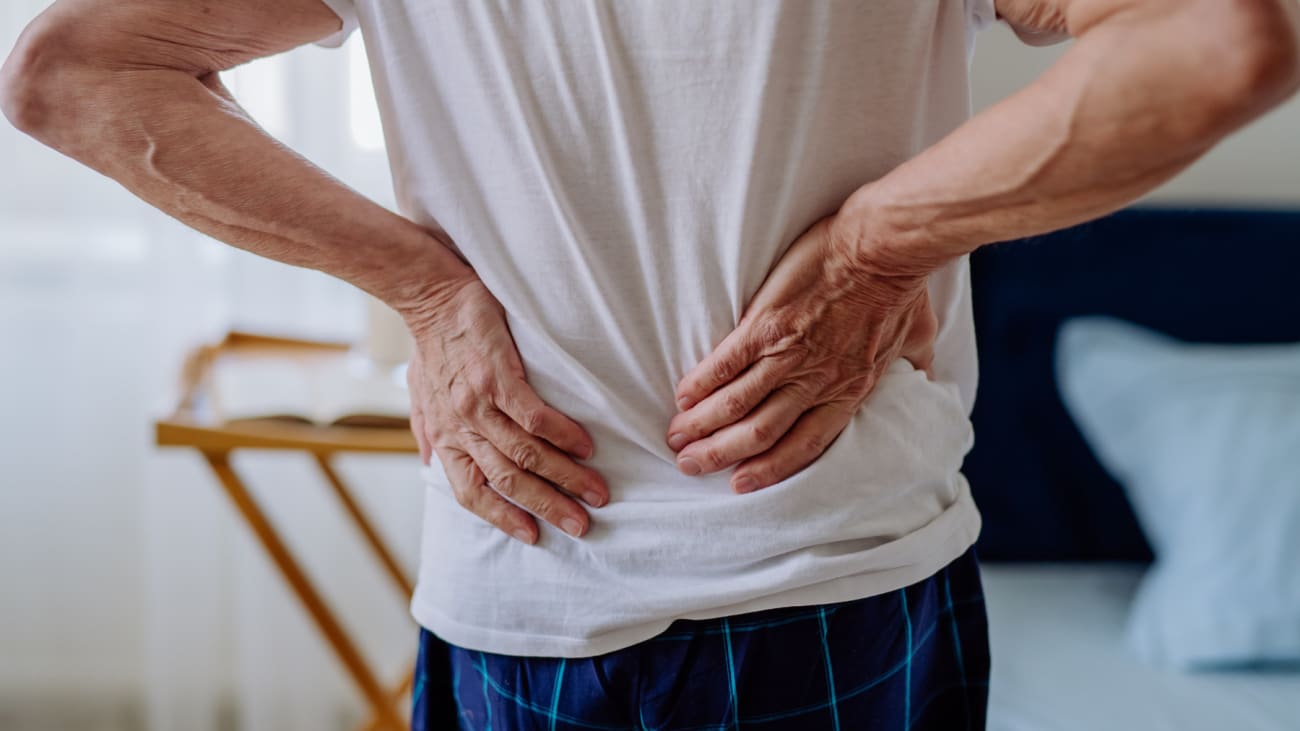

A Cedars-Sinai Study Links Back Pain to a Subtype of Cells in Spinal 'Shock Absorbers'
A new Cedars-Sinai study might have cracked the mystery surrounding the cause of a specific type of back pain.
Almost 40% of the adult population experiences low back pain due to degenerating disks in the spine, but medical science hasn’t understood exactly why the disks become painful. In a new study published in the journal Science Translational Medicine, Cedars-Sinai investigators point the way to an answer—and possibly a step toward targeted treatment.

Dmitriy Sheyn, PhD
“We’ve identified for the first time particular cells that could be the key to understanding disk pain,” said Dmitriy Sheyn, PhD, research scientist in the Board of Governors Regenerative Medicine Institute at Cedars-Sinai and senior author of the study. “Learning more about how these cells work could lead to the eventual discovery of new treatment options.”
The bones making up the spine are interspersed with jelly-filled spacers, known as intervertebral disks, that act as shock absorbers. Due to age, overuse or injury, the jelly starts to dry out and degenerate, but this doesn’t mean that the disk necessarily becomes painful, Sheyn said.
“This is because the inner jelly-like layers of the disks contain no nerve endings,” said Sheyn, who is also an assistant professor of Orthopaedics, Surgery, and Biomedical Sciences at Cedars-Sinai. “But sometimes, when disks degenerate, nerve endings from the surrounding tissues invade the disk, and we believe this causes pain.”
Several cell types exist in this jelly-like layer, and when investigators compared cells from patients with pain-free degenerated disks and patients with disk-associated low back pain, they found that patients experiencing low back pain had greater numbers of a certain subtype of cell that might be involved in the onset of the pain.
“This represents a breakthrough in our understanding of disk-associated back pain,” said Hyun Bae, MD, professor of Surgery and Orthopaedics at Cedars-Sinai and a co-author of the study. “It is an essential step toward finding a nonsurgical biologic treatment.”
“Unveiling the key cells behind disk-related pain marks a pivotal stride in reshaping how we approach back pain management,” said Mark Vrahas, MD, chair of Cedars-Sinai Orthopaedics. “This discovery opens doors to targeted therapies that may revolutionize orthopaedic treatments, offering hope to millions worldwide.”
In a cell culture dish, investigators subjected healthy cells to conditions that simulated disk degeneration—including inflammation, acidity, tension and compression, low glucose, and low oxygen—and were able to transform them into the pain-associated subtype.

Hyun Bae, MD
Investigators also grew cells in one chamber of a special two-chamber laboratory chip. Into the other chamber, they introduced pain-signaling neurons that they had created from stem cells.
When pain-associated cells were in the chip, pain-signaling neurons in the other chamber grew axons—special fibers nerves use to send information—toward them. When healthy cells were in the chamber, the neurons didn’t send out axons.
“We don't know whether the pain-associated cells attracted the invasion of the neurons, or the healthy cells repelled it, but there was definitely a difference between the healthy and the pain-associated cells,” Sheyn said.
Future treatments based on this new information might focus on reprogramming pain-associated intervertebral disk cells into healthy cells, or on adding healthy cells to painful disks to overwhelm the pain-associated cells, according to Clive Svendsen, PhD, executive director of the Board of Governors Regenerative Medicine Institute at Cedars-Sinai.
“Precisely targeting the ‘bad’ cell subtype or supplementing the ‘good’ cell subtype may provide useful strategies for treating disk-based low back pain,” Svendsen said. “This study validated some knowledge in classical disk or pain biology and could be a step toward a targeted cell therapy that addresses the root causes of low back pain.”
Additional study authors included Wensen Jiang, PhD, and Juliane Glaeser, PhD, who are both research scientists at Cedars-Sinai.
Funding: The study was funded by the Cedars-Sinai Board of Governors Regenerative Medicine Institute; National Institutes of Health grants K01AR071512, and R34NS126032; and California Institute for Regenerative Medicine grant EDUC4-12751.
Learn more on the Cedars-Sinai Blog: Treating Back Pain Without Surgery
